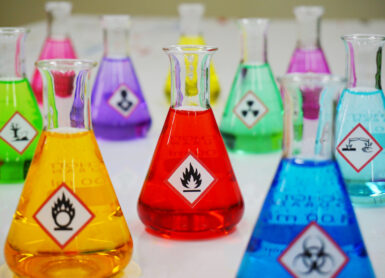

Hydrogen is increasingly seen as an important component of the clean-energy mix for a sustainable energy future. It has been identified as an alternative fuel that, if generated from clean energy or combined with carbon capture, usage and storage, could help bring the world towards a low-carbon society. Hydrogen is also commonly found in mixtures of flammable gases such as refinery process streams.
Explosion hazards
Hydrogen has a flammable range between 4 % and 77 % by volume. Due to its flammability, ignition properties, buoyancy, and other properties that require engineering control, designing a system that ensures its safe use can be a challenging process.
Awareness of explosion hazards is critical so that early precautions can be taken, including the selection of appropriate Ex Equipment. Equipment intended for use in potentially explosive atmospheres containing hydrogen gas falls within the scope of the ATEX Product Directive 2014/34/EU. Such equipment shall be subject to a conformity assessment procedure as set forth in the directive.
Ex Equipment for hydrogen installations
Generally, Ex Equipment is selected based on the hazardous area classification. The ATEX User Directive 1999/92/EC specifies which categories of Ex Equipment that can be used in the different zones. In addition, it must be ensured that the Ex Equipment is suitable for use with hydrogen gas.
Ex Equipment that has been constructed and tested in accordance with the requirements in the ATEX harmonised standards is divided into and marked with Group I, II or III depending on the explosive atmosphere in which the equipment may be installed. Equipment of Group II is intended for use in areas with an explosive gas atmosphere (other than mines susceptible to firedamp).
Group II is again subdivided into IIA, IIB or IIC based on the maximum experimental safe gap (MESG) or the minimum igniting current ratio (MIC ratio) of the explosive gas atmosphere. Hydrogen is in Group IIC, which is associated with the lowest MESG and MIC-values.
Furthermore, hydrogen has an auto ignition temperature of 560 °C corresponding to temperature class T1 of the equipment, which shall also be indicated in the marking of the Ex Equipment.
Learn more
Learn more about Ex Equipment for hydrogen installations through one of Gexcon Certification’s training courses or contact us about ATEX certification of equipment.
References to harmonised standards:
- EN 1127-1:2019 – Explosive atmospheres, Explosion prevention and protection, Part 1: Basic concepts and methodology
- EN IEC 60079-0:2017 – Explosive atmospheres – Part 0: Equipment – General requirements
- EN ISO 80079-36:2016 – Explosive atmospheres, Part 36: Non-electrical equipment for explosive atmospheres, Basic method and requirements
- EN 60079-20-1:2010, Explosive atmospheres, Part 20-1: Material characteristics classification for gas and vapour Test methods and data
Other News

ATEX Assemblies – a basic introduction
Explosion risk assessment of assemblies can be complex. Assemblies may consist of equipment of different categories and be intended for potentially explosive atmospheres having different physical characteristics. They may also include parts other than equipment such as components and protective systems.
News
CLP and testing of hazardous substances
CLP stands for “classification, labeling, and packaging” and determines whether a substance or mixture should be classified and labelled as hazardous. The objective of the CLP Regulation is to ensure a high level of protection of health and the environment, as well as the free movement of substances, mixtures and articles.
News
Need to store a technical file?
Happy new year everyone! Today we would like to present one of our services – storage of technical file. This is relevant for all manufacturers of non-electrical ATEX equipment and interesting read for all end-users of ATEX equipment. Following completion of the equipment design phase and completion of the ignition
News